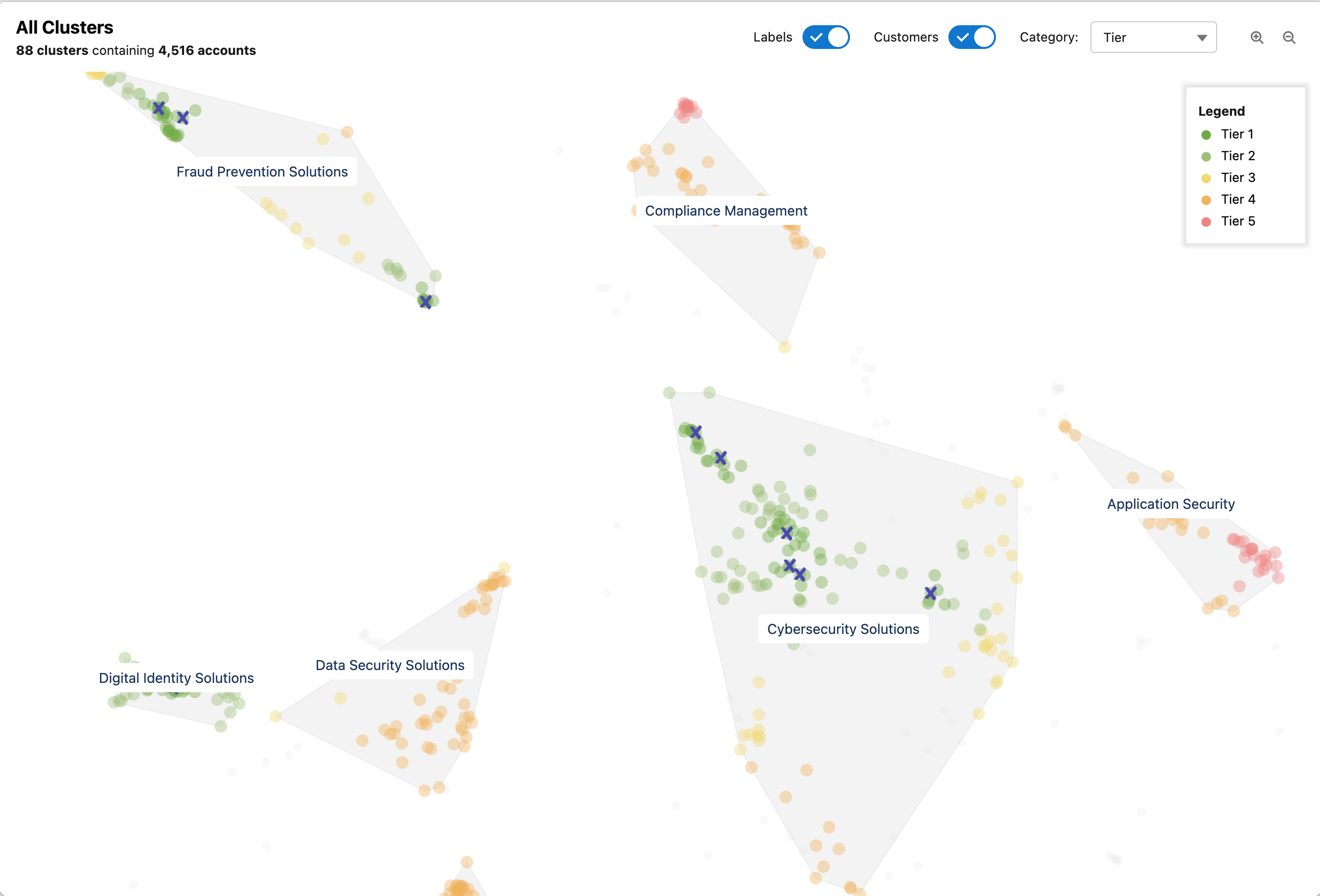Let’s be honest: most outbound efforts today are still fueled by gut feel and guesswork. Sales managers are tired of CRM tags that lie, industry codes that mean nothing, and reps wasting time on accounts that were never a real fit.
If you're serious about making outbound a true pipeline engine—not a lottery ticket—you need a better way to map your market. That’s where Gradient Works Market Map comes in.
Today I’ll walk you through what Market Map is, how it works, how it fits into your go-to-market system, and how sales managers and RevOps pros are already seeing big wins from it.
What Market Map actually does
Market Map is Gradient Works' way of flipping old-school segmentation on its head. Instead of assigning reps an “industry” and hoping it magically matches your ICP, Market Map uses AI-driven clustering to group accounts based on real-world similarities—things that actually matter to your sale.
It clusters your market into microsegments: smaller, high-potential groups of accounts that look and behave alike. Think: "Mid-sized regional accounting firms specializing in nonprofits" instead of just "Accounting industry."
These clusters aren’t just for show. They're created based on firmographic data, product signals, behavior, and your best current customers—so you're always finding accounts that are more like your winners.
Why it matters now
Outbound has changed. The "spray and pray" era is over. If you want a shot at scaling pipeline in 2025, you need focused, strategic outbound—period.
Here’s the thing: most teams have tons of accounts sitting in CRM. But if you can’t prioritize the right ones, your reps spend half their day researching (and the other half ignoring the hard calls). Market Map fixes that.
Instead of manually picking targets—or relying on outdated territory plans—you can automate smarter segmentation at scale. Use clusters to build GTM plays around real customer needs, and arm reps with context-rich, hyper-targeted messaging.
Best use cases and practices
Here’s how winning teams are using Market Map today:
- Microvertical targeting: Like Procurify, you can build campaigns around specific microsegments, giving reps fewer but better accounts and custom enablement packages.
- Prioritization of big TAMs: Other companies are using Market Map to cut their massive total addressable market down to only the highest-potential prospects—and tripling outbound pipeline creation.
- Outbound enablement: With clusters in hand, you can build sequences, demos, talk tracks, and case studies specifically for that microsegment. The goal is fewer sequences, better conversations.
- Data clean-up and CRM hygiene: Layer Market Map outputs onto your CRM to spot missing or outdated records fast. It’s a forcing function for better data without having to boil the ocean.
How it fits with Gradient Works' broader platform
Market Map isn’t a standalone magic trick—it’s a core piece of a complete dynamic outbound system. It works alongside:
- AI Researcher to fill in missing account data.
- Bookbuilder to dynamically assign the best-fit accounts to reps.
- Routing to handle fast inbound distribution.
- Analytics to track rep coverage, market penetration, and engagement gaps.
Put together, you’re not just hoping reps “figure it out.” You’re creating a scalable system where the best accounts get into the right hands, and you can measure and improve every step of the way.
Pro tips for making the most of Market Map
If you’re rolling out Market Map or considering it, focus on building campaigns around clusters, not broad verticals—go narrower than you think you should. Top teams also invest time educating reps on why the accounts are in their book, because when reps understand the "why," they engage much more effectively. To get the most from each cluster, tie your campaigns to targeted enablement like emails, talk tracks, and demo environments built specifically for those segments.
Remember, clusters aren't just for net-new outreach; they're equally valuable for pipeline expansion, including closed-lost recycles and expansion plays.
Wrapping up
Market Map isn't just a new feature. It’s a new foundation.
If you want your outbound team focused, your CRM clean, and your pipeline growing faster than your competitors’, you need to stop playing territory roulette and start mapping your market the smart way.
Ready to make outbound your advantage? Market Map is how you start.





